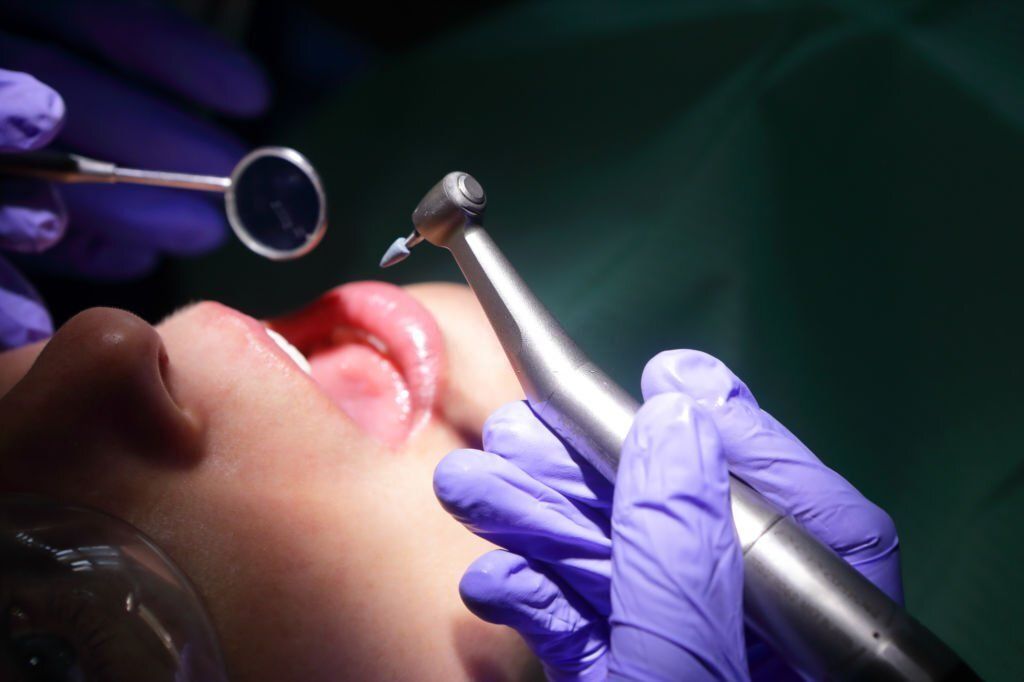A root canal, also known as endodontic therapy, is a dental procedure that removes the pulp in a tooth. The pulp consists of connective tissue, nerves, and blood vessels that help with tooth growth. The tooth encompasses the crown and roots. The pulp sustains the tooth and helps moisture its surroundings.
Root Canal Treatment
Root canal therapy is a dental practice used to treat tooth conditions and protect the tooth from future infections. A root canal happens when the endodontist takes out the infected pulp and nerve in the root of the tooth in order to clean and shape the inside of the root canal while filling and sealing the space afterward.
Root canal treatments are painless and can rescue a bad tooth. Root canal recovery takes less than a week. Mild pain may be present for the next few days, subsiding after a while with the help of medication.
Stages Of Root Canal Treatment
The root canal procedure usually takes two appointments. After the first appointment, the patient should no longer feel pain due to anesthesia kicking in. The second phase requires more cleaning and disinfecting and permanently sealing the inside of the tooth to ensure protection from future damage. The average root canal treatment takes up to 30-60 minutes, while more complex cases last 90 minutes. Only a tiny percentage of root canal cases develop unexpected complications.
Here is a step-by-step guide to a root canal procedure:
- Extirpation: This refers to the initial cleaning of the canal to control bacterial infections. It is the complete removal of the infected pulp from the inside of the tooth. Anesthesia is used on the infected tooth to numb the tooth and surrounding area.
- Instrumentation: The dentist then applies a dental wall, a thin sheet of rubber that helps the doctor concentrate on the affected tooth blocking out the other teeth. A little hole is then drilled into the affected tooth to access the dead pulp section.
- Obturation: This is the technical term for filling and sealing a prepared root canal. It is the last stage of the treatment. The remaining debris, if any, is removed, and the tooth canal is filled and sealed to prevent reinfection.
It is usual for a doctor to recommend placing a crown over the tooth within months after a root canal treatment to provide maximum protection. If the patient hesitates to get a root canal treatment, the bacterial infection can spread to other areas of the mouth, increasing the risk of severe dental issues.
Endodontist
An endodontist is a term used to refer to highly specialized dentists in endodontics which is the dental forte involved with the study and treatment of the pulp. They diagnose and treat complex tooth pain, such as tooth abscess infection. They perform an average of 25 root canal treatments in a week. They focus on relieving toothache as well as saving the natural tooth. Endodontists specialize in treating tooth or root-related tissues that have undergone damage. They repair tissues inside the tooth with state-of-the-art procedures. They don’t place fillings or clean teeth.
A dentist can execute multiple root canal treatments on the same tooth. The results are unpredictable, and the most skilled dentists sometimes have unsuccessful outcomes. Studies reveal that root canal treatment has an 86-95 success rate.
4 Steps to A Successful Root Canal Recovery
Suitable after-care for the mouth after a root canal treatment allows for a straightforward recovery. It helps speed up the healing process.
Here are some steps to be taken:-
- Ensuring A Clean Area
Patients should practice proper oral hygiene. The lack of germs automatically advances the healing process. Flossing, brushing, and rinsing the mouth with salt water to help reduce soreness and prevent the invasion of bacteria are all activities that may be part of the doctor’s suggestions.
- Effective Use of Medications
The use of prescribed medication helps to avoid infections, tooth infections are painful even after treatment, but these drugs help take away the pain.
- Careful Food Selection
A few hours after the procedure, patients are advised not to eat. The treated area becomes temporarily sensitive to cold or hot substances. Room-temperature foods are the best option.
- Avoid Pressure on The Tooth
After the exercise, the area treated becomes tender. Patients should generally avoid pressing or applying pressure on the treated tooth.
As claimed by the American Association of endodontists, root canals have a success rate of around 95%. In most situations, they will last a lifetime.
Carlstadt, New Jersey, is home to the best professional dentists. Dr. Rizzo is a Carlstadt dentist specializing in family and cosmetic dentistry, teeth whitening, and dental implants. Schedule an appointment or call at (201) 939-5770 to help you maintain your beautiful smile.





